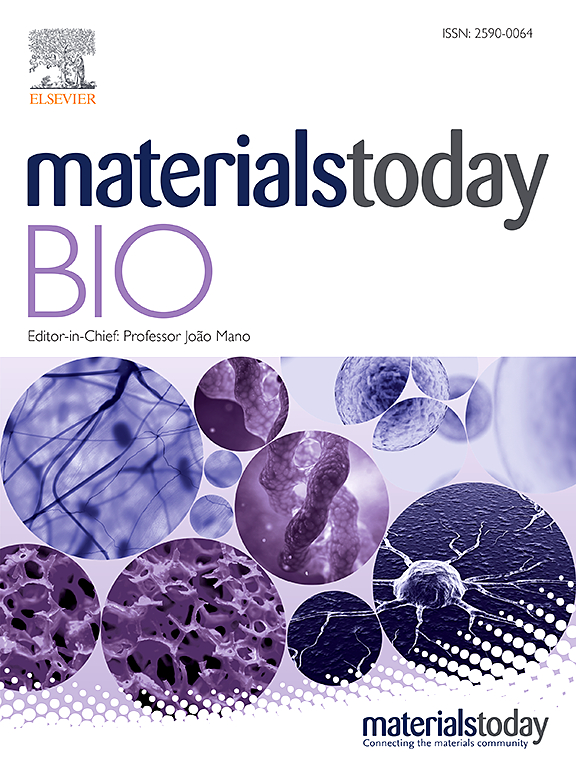Constructing J-aggregates of cyanine dye for NIR-II in vivo dynamic vascular imaging and long-term targeting of tumors
IF 8.7
1区 医学
Q1 ENGINEERING, BIOMEDICAL
引用次数: 0
Abstract
Cyanine molecules with the second near-infrared (NIR-II) emission hold great potential for bioimaging owing to their great biocompatibility, but the scissor-like structure of these molecules poses a major bottleneck in obtaining efficient NIR-II fluorescence probes. Constructing J-aggregates represents a promising strategy for obtaining biomedical NIR-II emissive materials. However, achieving J-aggregates in cyanine dyes with large torsion angles between the heterocyclic rings poses a challenge. In this study, we introduced the guanidine of tumor molecular targeted peptide 1 (TMTP1) to increase steric hindrance of IR-783 and reduce the angle of IR-783 scissors. The near-coplanar structure of IR-783@peptide TMTP1 composite facilitates the formation of a novel J-aggregates (IR-783-LP-TMTP1) with super-stable effect for NIR-II in vivo dynamic vascular imaging and remarkable tumor targeting capability. The stable emission wavelength and high spatial resolution of J-aggregates was demonstrated for brain and ear vasculature bioimaging under 808 nm laser excitation. Additionally, J-aggregates exhibits robust tumor-targeting capability towards cervical tumors, indicating their potential in cervical cancer diagnosis. This work develops a molecular design strategy to construct bright NIR-II J-aggregates with super-stable and robust tumor-targeting properties and paving the way for improving bioimaging performance of similar molecules.

求助全文
约1分钟内获得全文
求助全文
来源期刊

Materials Today Bio
Multiple-
CiteScore
8.30
自引率
4.90%
发文量
303
审稿时长
30 days
期刊介绍:
Materials Today Bio is a multidisciplinary journal that specializes in the intersection between biology and materials science, chemistry, physics, engineering, and medicine. It covers various aspects such as the design and assembly of new structures, their interaction with biological systems, functionalization, bioimaging, therapies, and diagnostics in healthcare. The journal aims to showcase the most significant advancements and discoveries in this field. As part of the Materials Today family, Materials Today Bio provides rigorous peer review, quick decision-making, and high visibility for authors. It is indexed in Scopus, PubMed Central, Emerging Sources, Citation Index (ESCI), and Directory of Open Access Journals (DOAJ).
 求助内容:
求助内容: 应助结果提醒方式:
应助结果提醒方式:


